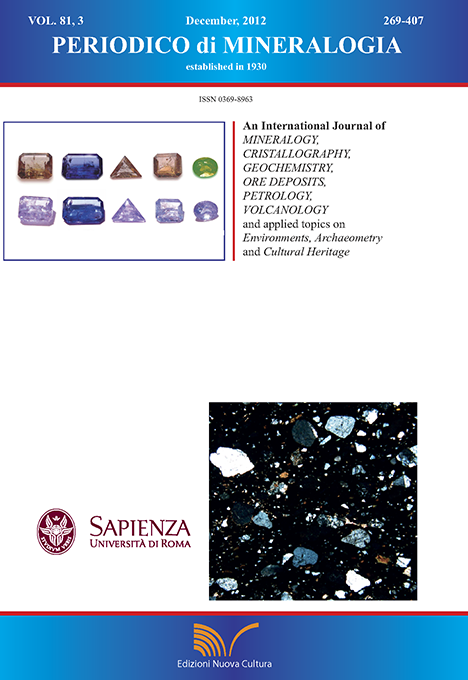Archaeometric reconstruction of Nuragic ceramics from Sant’Imbenia (Sardinia, Italy). Technological evolution of production process
DOI:
https://doi.org/10.2451/2012PM0018Keywords:
Nuragic ceramics, Sardinia, mineralogy, texture, technologyAbstract
The Nuragic village of Sant’Imbenia in Alghero in north-western Sardinia (Italy) was inhabited between approximately the 14th and the 7th century BC. Foreigners including Eastern Phoenicians and perhaps Greeks settled in the village during the last stages of its existence in the Early Iron Age, importing their own culture and technology and developing the area. Some of the pottery artifacts produced during this period do not seem to belong to the Nuragic tradition, which suggests that local craftsmen were influenced by these contacts and exchanges with foreign cultures.
The objective of this work was to characterize the artifacts and analyze the evolution in production techniques during the Middle-Late Bronze Age and the Early Iron Age. The main changes seem to have occurred during the transition from the Bronze to the Iron Age, and there was also a clear distinction between cooking and serving wares. We observed that the decoration on the surface of the ceramics changed from the smooth surfaces of the Middle-Late Bronze Age to the partially vitrified, normally red slip wares of the Early Iron Age. Fragments of volcanic rocks were detected in the Early Iron Age cooking wares instead of calcite, the temper typically used during the Middle-Late Bronze Age. Firing temperatures were slightly higher in the Early Iron Age, as inferred by the presence of new mineral phases and the vitrification of the matrix. The surfaces of the ceramics were red, especially during the Early Iron Age, while the mixture often had a black heart.


